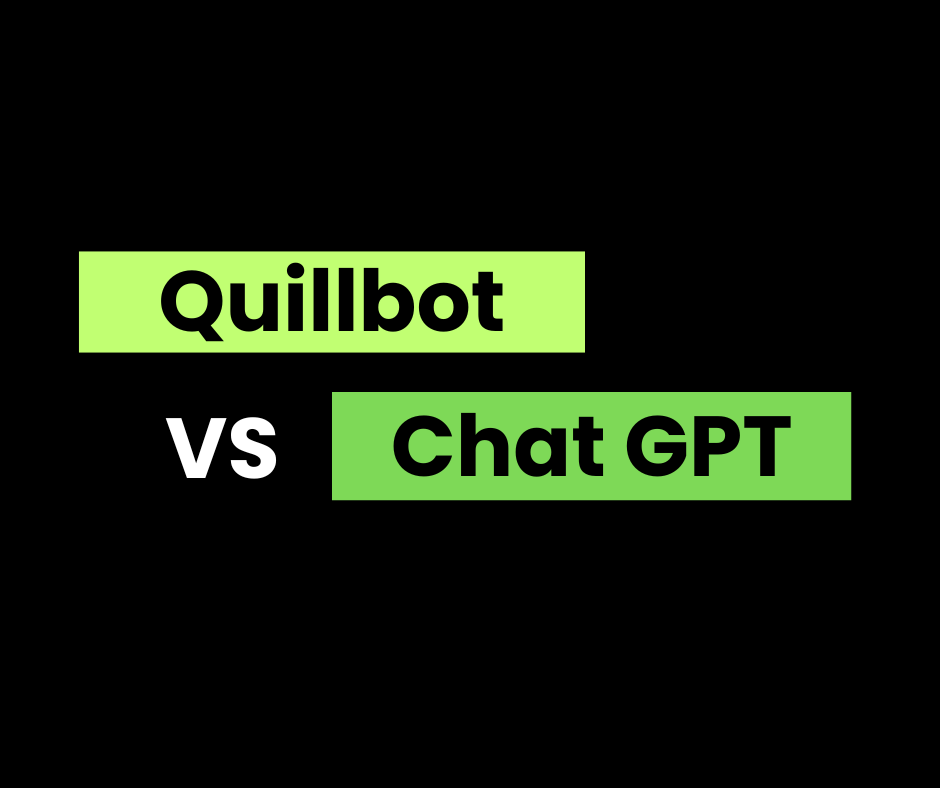Table of Contents
ToggleIntroduction: In today’s digital age, content generation and writing have become integral in various fields. To assist writers and content creators, AI-powered tools like Quillbot and CHATGPT have emerged. In this article, we will explore the meanings of Quillbot and CHATGPT, and then delve into their differences through illustrative examples. Furthermore, we’ll discuss how these tools can be employed across different professional domains.
Understanding Quillbot and CHATGPT:
Quillbot: Quillbot is an AI-driven writing enhancement tool that specializes in sentence rephrasing and content improvement. It employs advanced algorithms to reword sentences and paragraphs while maintaining the original meaning. Quillbot is a valuable tool for writers looking to enhance their writing style and fluency.
CHATGPT: CHATGPT, on the other hand, is a variant of GPT (Generative Pre-trained Transformer) designed for conversational AI applications. It’s a language model that can generate human-like text based on the prompts it receives. CHATGPT is used for chatbots, virtual assistants, and other natural language understanding tasks.
Differences between Quillbot and CHATGPT:
Functionality:
- Quillbot focuses on rewriting and enhancing existing text, primarily for content improvement.
- CHATGPT generates human-like text based on given prompts and is primarily used for simulating conversation and answering questions.
Example: Prompt: “Please provide a brief overview of artificial intelligence.”
Quillbot Result: “Please offer a concise introduction to artificial intelligence.” CHATGPT Response: “Artificial intelligence, often referred to as AI, is the simulation of human intelligence in machines.”
Use Cases:
- Quillbot is often used by writers, bloggers, and content creators to improve the readability and coherence of their content.
- CHATGPT is employed in chatbots, virtual assistants, customer service applications, and any scenario that requires human-like text generation.
Example:
- A blogger might use Quillbot to refine a blog post for better readability.
- A customer service chatbot might use CHATGPT to provide responses to customer inquiries.
Audience:
- Quillbot is generally used by individuals and professionals looking to enhance their writing.
- CHATGPT caters to businesses and developers aiming to incorporate natural language processing into their applications.
Example:
- A marketing agency might use Quillbot to improve their ad copy.
- A tech company might implement CHATGPT to create a conversational AI for their website.
Application in Different Fields:
- Content Creation and Blogging:
- Quillbot can help bloggers and content creators refine their articles, making them more engaging and polished.
- CHATGPT can assist in generating content ideas and even simulating interviews or discussions for blog posts.
Customer Support and Chatbots:
- CHATGPT is ideal for creating chatbots that offer real-time customer support, answering common queries, and providing assistance.
Academic and Research Writing:
- Quillbot can aid students and researchers in improving the clarity and coherence of their academic papers.
- CHATGPT can be used to generate example conversations for research on human-computer interaction.
E-commerce and Marketing:
- Quillbot can refine product descriptions and marketing copy, making them more persuasive.
- CHATGPT can power chatbots for e-commerce websites, helping customers find products and complete purchases.
Conclusion:
Quillbot and CHATGPT are powerful AI tools that cater to different needs. Quillbot is a writing enhancement tool, while CHATGPT is designed for generating human-like text for conversational AI applications. The choice between the two depends on your specific requirements and the domain in which you wish to apply them. When used effectively, both tools have the potential to significantly enhance productivity and content quality across various professional fields.

